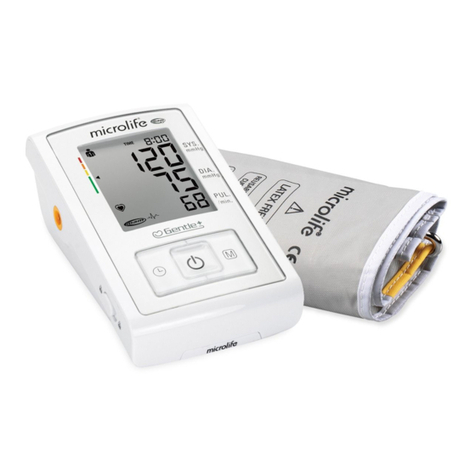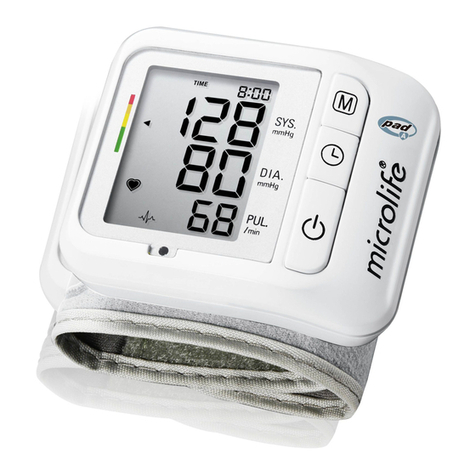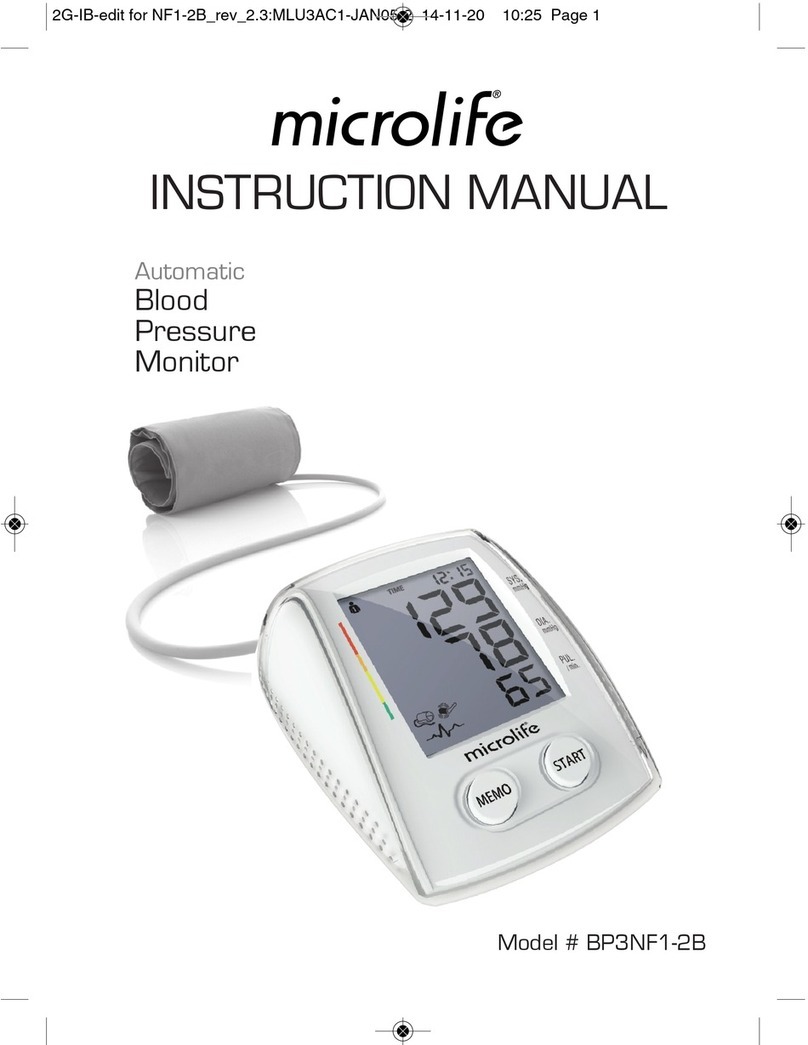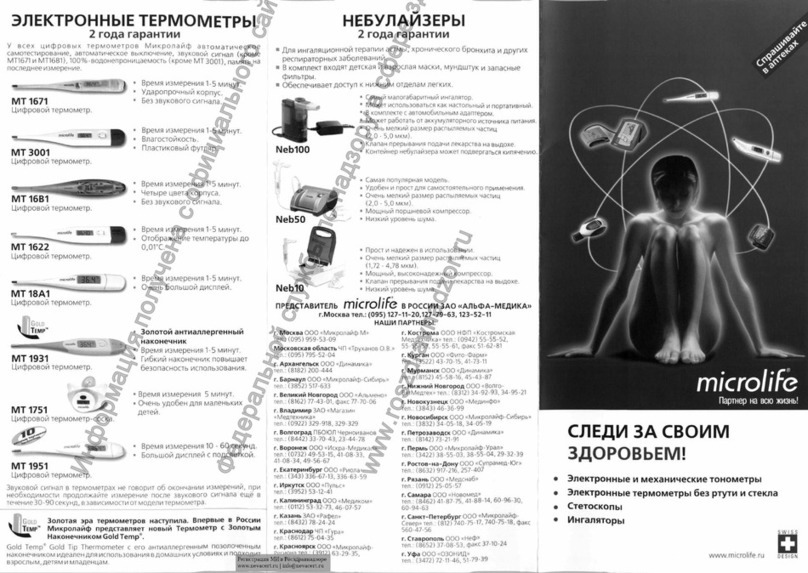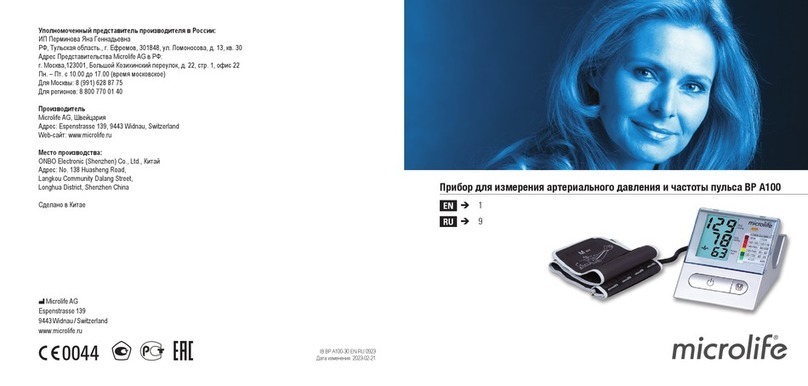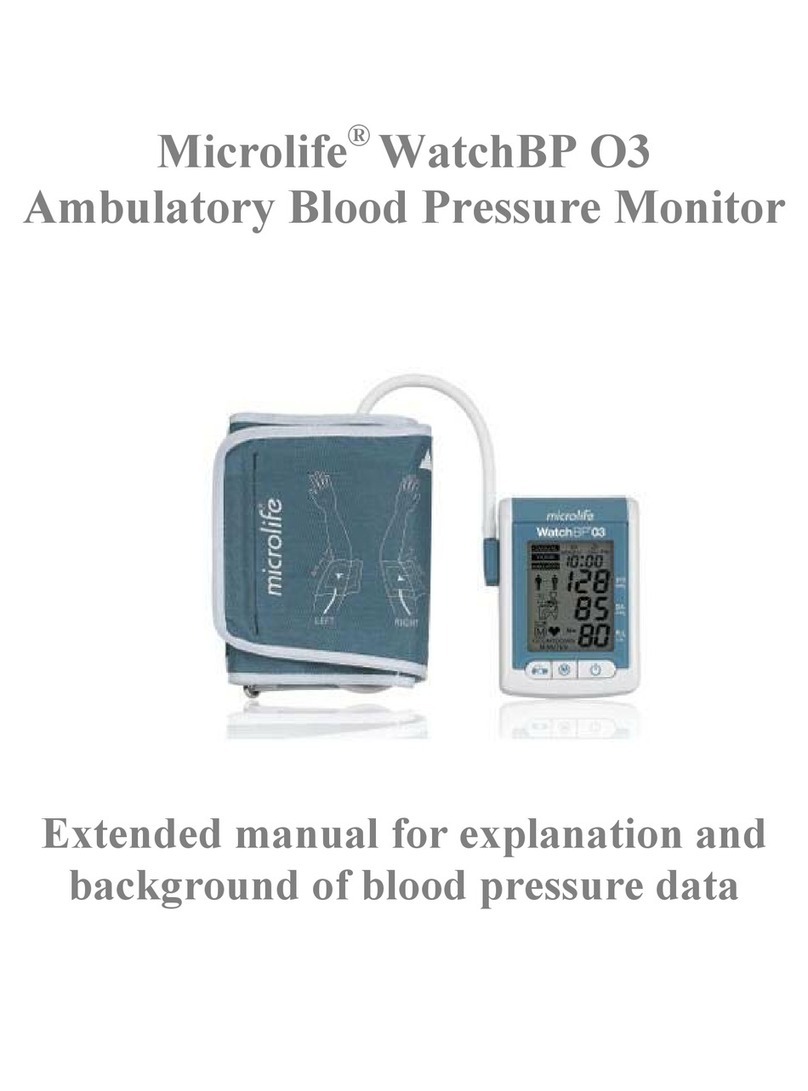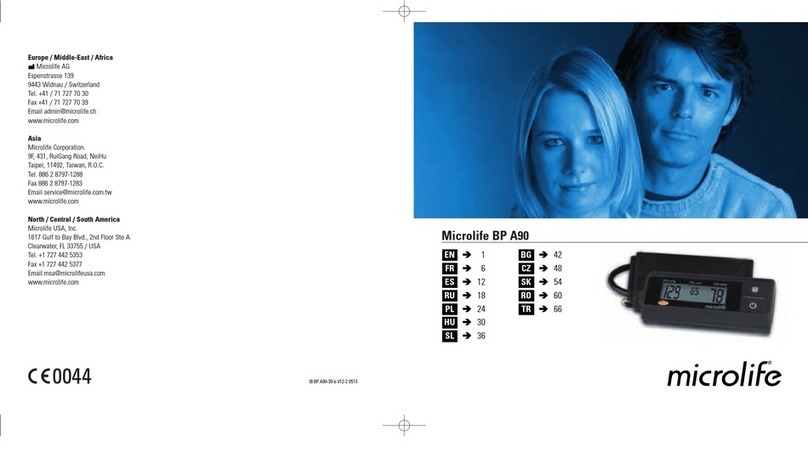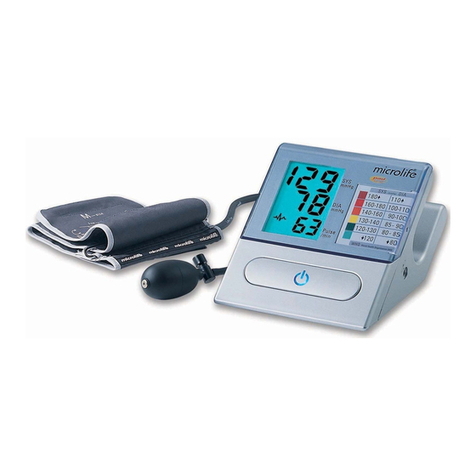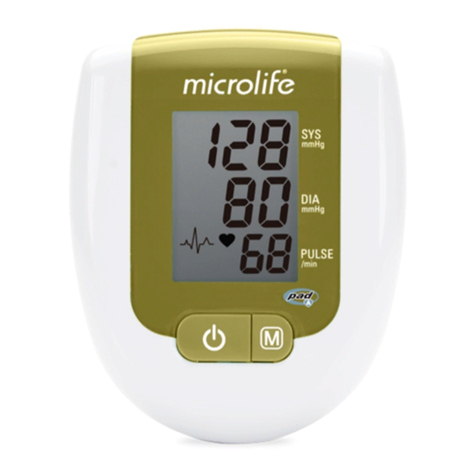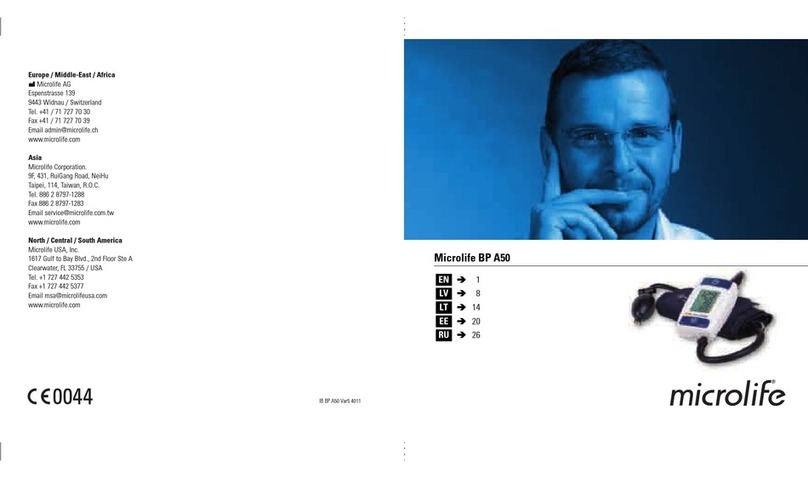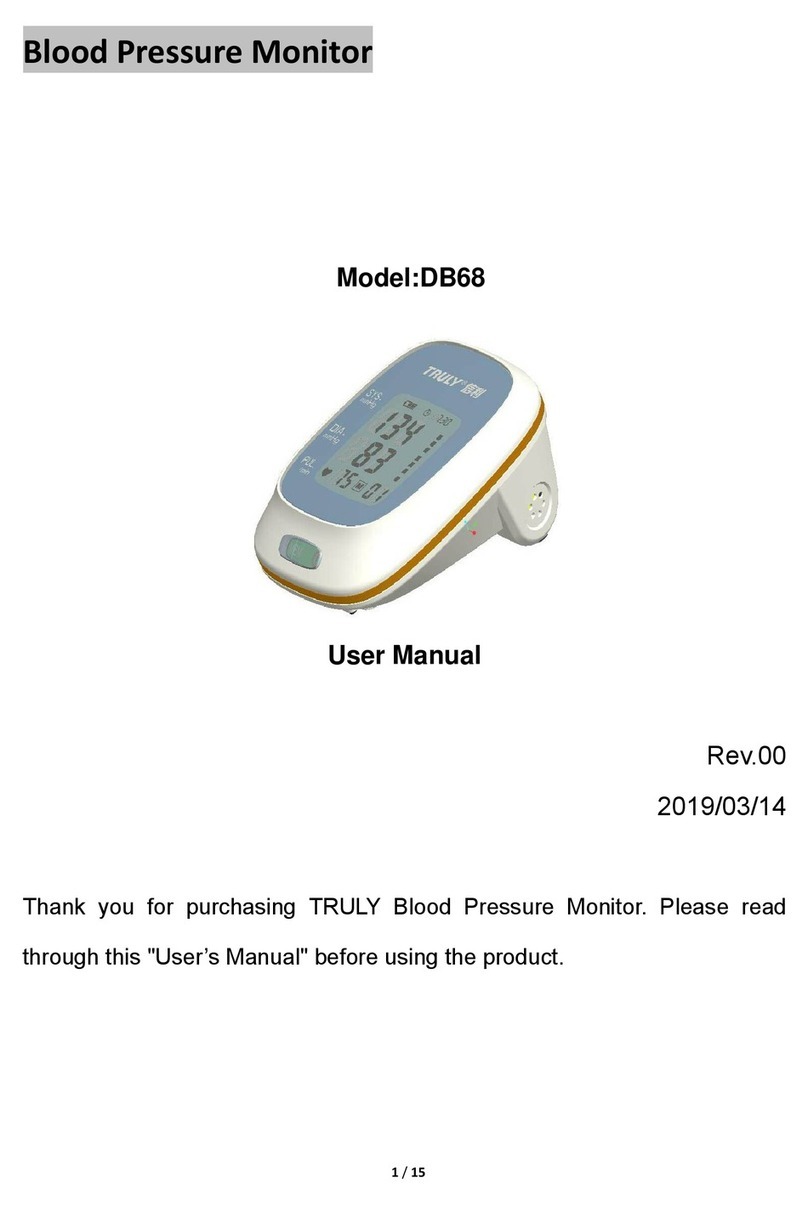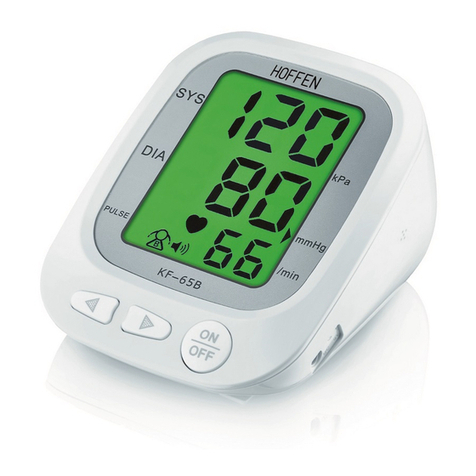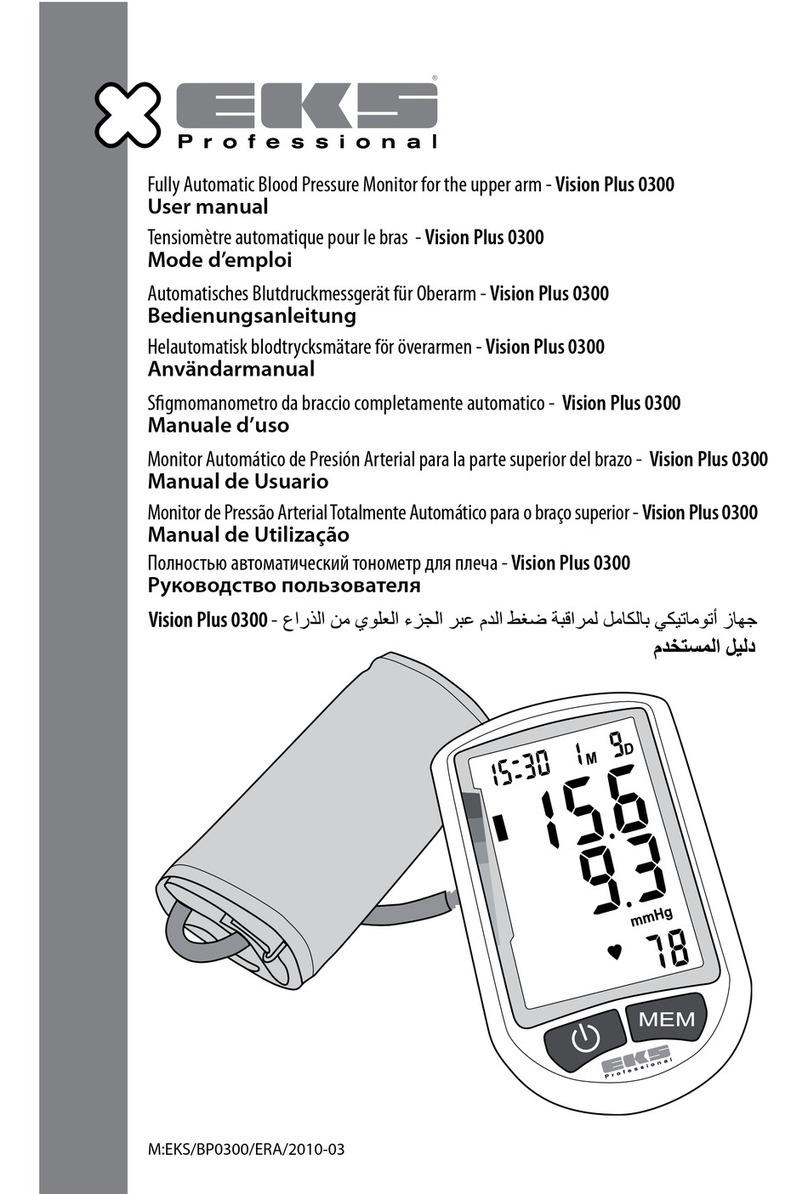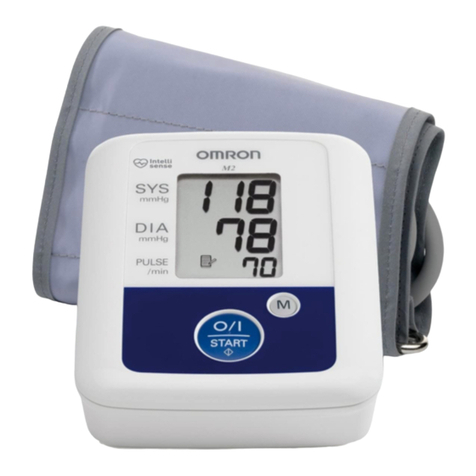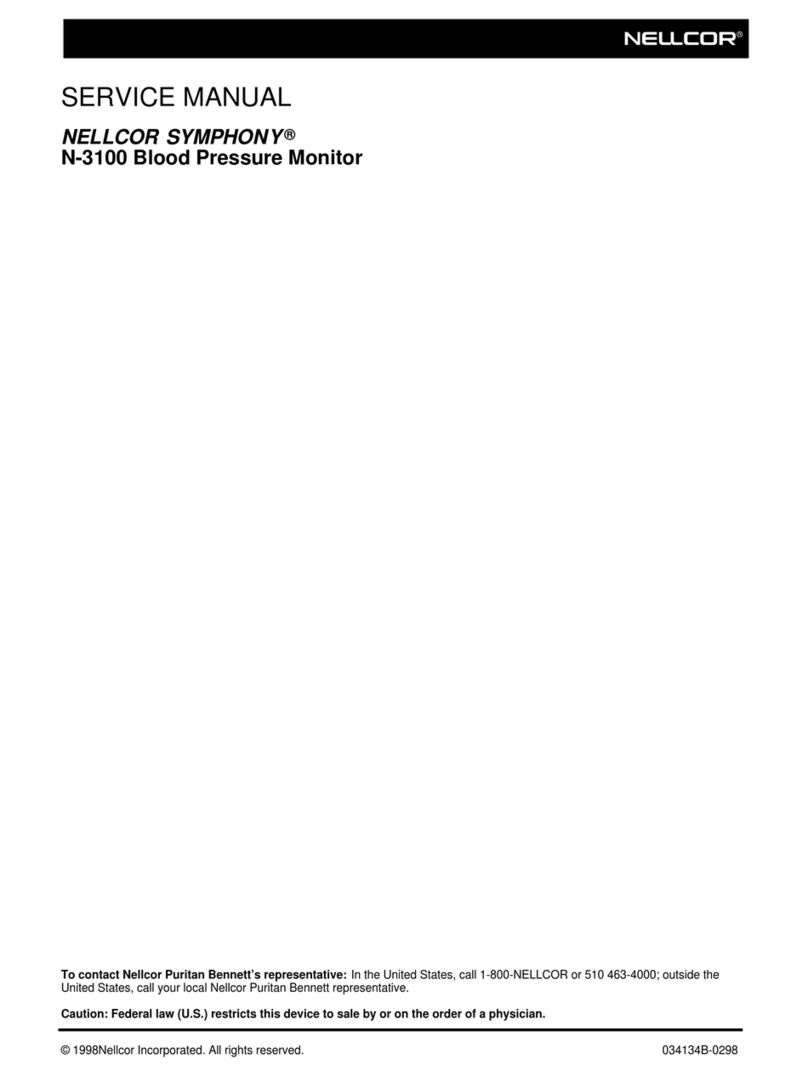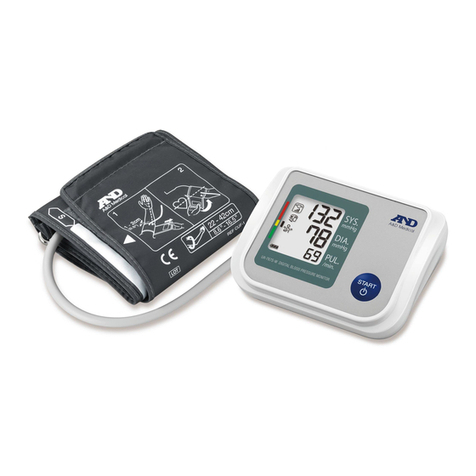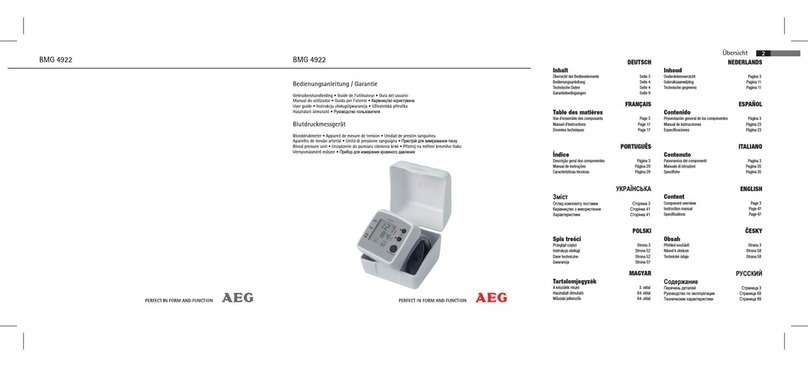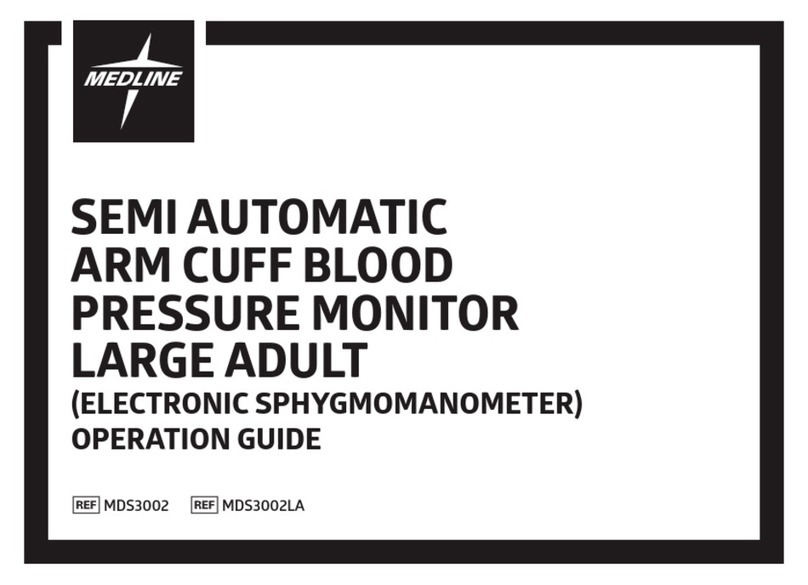
3BP A90 EN
This device comes with a M size cuff.
Only use Microlife cuffs.
Contact your local Microlife Service if the enclosed cuff 6does
not fit.
Connect the cuff to the device by inserting the cuff connector 7
into the cuff socket 3as far as it will go.
3. Taking a Blood Pressure Measurement using this
Device
Checklist for taking a reliable measurement
1. Avoid activity, eating or smoking immediately before the
measurement.
2. Sit down for at least 5 minutes before the measurement and relax.
3. Always measure on the same arm (normally left). It is recom-
mended that doctors perform double arm measurements on a
patients first visit in order to determine which arm to measure in
the future. The arm with the higher blood pressure should be
measured.
4. Remove close-fitting garments from the upper arm. To avoid
constriction, shirt sleeves should not be rolled up - they do not
interfere with the cuff if they are laid flat.
5. Always ensure that the correct cuff size is used (marking on the
cuff).
•Fit the cuff closely, but not too tight.
•Make sure that the cuff is positioned 2 cm above the elbow.
•The artery mark on the cuff (ca. 3 cm long bar) must lie over
the artery which runs down the inner side of the arm.
•Support your arm so it is relaxed.
•Ensure that the cuff is at the same height as your heart.
6. Press the ON/OFF button 1to start the measurement.
7. The cuff will now pump up automatically. Relax, do not move
and do not tense your arm muscles until the measurement
result is displayed. Breathe normally and do not talk.
8. When the correct pressure is reached, the pumping stops and the
pressure falls gradually. If the required pressure was not reached,
the device will automatically pump some more air into the cuff.
9. During the measurement, the pulse indicator AM flashes in the
display.
10.The result, comprising the systolic 8and the diastolic 9
blood pressure and the pulse rate AT is displayed.
11.When the device has finished measuring, remove the cuff.
12.Switch off the device. (The monitor does switch off automati-
cally after approx. 1 min.).
You can stop the measurement at any time by pressing the
ON/OFF button (e.g. if you feel uneasy or an unpleasant
pressure sensation).
4. Appearance of the Pulse Arrhythmia Indicator for
early Detection
This symbol AO indicates that certain pulse irregularities were
detected during the measurement. In this case, the result may
deviate from your normal blood pressure – repeat the measure-
ment. In most cases, this is no cause for concern. However, if the
symbol appears on a regular basis (e.g. several times a week with
measurements taken daily) we advise you to tell your doctor.
Please show your doctor the following explanation:
5. Data Memory
This device always stores the last result at the end of the measure-
ment. To recall the reading, press and hold the ON/OFF button
1
while the device is switched off. All display elements are shown now.
Release the button when the stored result with the letter «
M
»
AP
is
displayed.
6. Battery Indicator and Battery change
Low battery
When the batteries are approximately ¾ empty the battery symbol
AN
will flash as soon as the device is switched on (partly filled battery
displayed). Although the device will continue to measure reliably, you
should obtain replacement batteries.
Flat battery – replacement
When the batteries are flat, the battery symbol AN will flash as soon
as the device is switched on (flat battery displayed). You cannot
take any further measurements and must replace the batteries.
1. Open the battery compartment 5on the bottom of the device.
Information for the doctor on frequent appearance of the
Arrhythmia indicator
This device is an oscillometric blood pressure monitor that also
analyses pulse irregularity during measurement. The device is
clinically tested.
The arrhythmia symbol is displayed after the measurement, if pulse
irregularities occur during measurement. If the symbol appears
more frequently (e.g. several times per week on measurements
performed daily) we recommend the patient to seek medical advice.
This device does not replace a cardiac examination, but serves to
detect pulse irregularities at an early stage.


